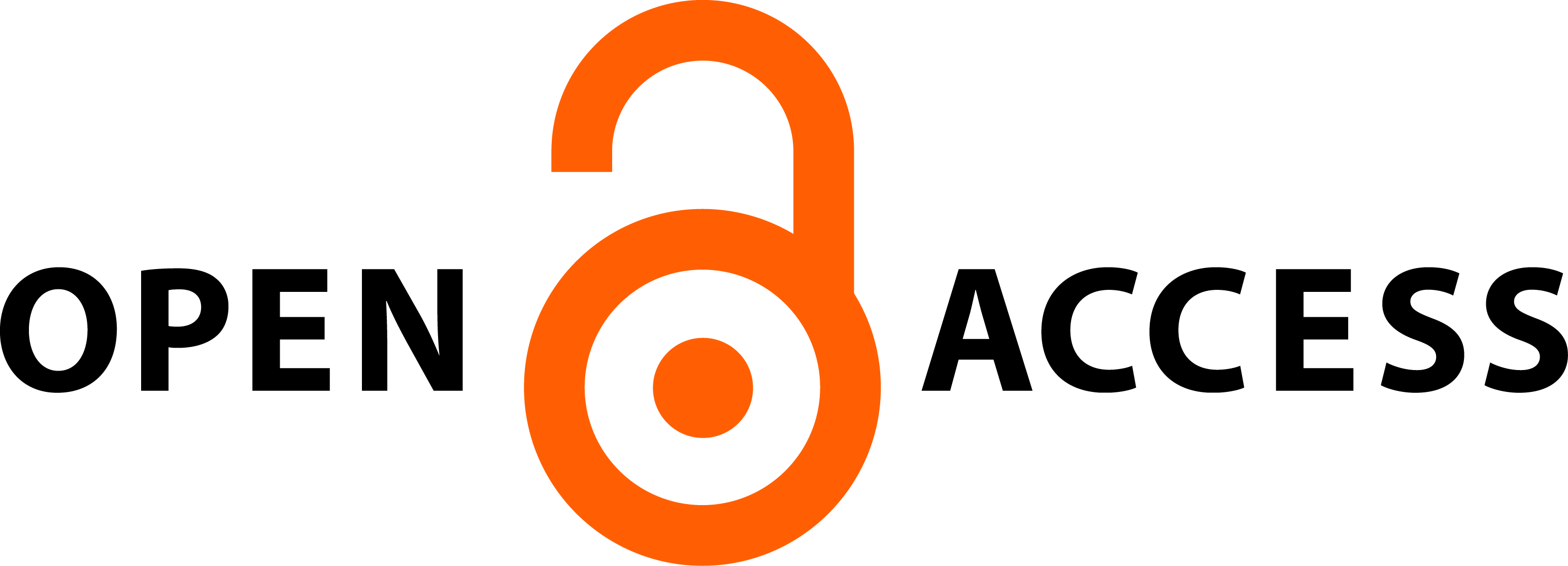ROSSZ KÖLTŐK TÁRSASÁGA Az epigonizmus és dilettantizmus természetrajza a 19. századi magyar irodalomkritikai gondolkodásban
Absztrakt
Terjedelmi okokból csupán első harmada jelenik itt meg egy nagyobb kritikatör- téneti dolgozatnak, mely a 18. század közepétől a 20. század elejéig járja körül azt a kérdést, hogy az európai és a magyar irodalomban mely korszakban mit tekin- tettek rossz költészetnek. Míg Horatiustól kezdve Winckelmannon és Wielandon át, a 18. század végéig a nagy mestereket és poétikai szabályokat csupán külsősé- gekben követő, ún. „szolgai utánzók” költészetét értékelték le, a 19. század elejétől, az Edward Young által kidolgozott eredetiségprogram jegyében már lényegében mindenfajta szövegkapcsolódás utánzásnak, s ily módon rossz költészetnek bizo- nyult. Az 1830-as években, az eredetiségfogalom vulgarizálódásával egyidőben terjedt el az utánzó költőkre alkalmazott epigon jelző. Az 1850-es évek végén Arany János az ars poeticaként is értelmezhető Zrínyi és Tasso című tanulmányában dolgoz- ta ki a modern értelemben vett szövegkapcsolatok elméletét, melynek alapján az eredetiség és utánzás kérdése irrelevánsnak bizonyult. Ekkor újult meg az a kérdés, melyet a 18. század végén Goethe és Schiller vázlatban dolgozott ki: amennyiben vannak utánzó, de jó, és eredeti, de rossz költők, akkor melyek a rossz költészet poétikai ismérvei. A másodvonalbeli költők szövegeiből Arany János és Erdélyi János a magyar irodalomban szinte egyedülálló módon hozta létre a rossz költészet eszköztárának, hibáinak katalógusát. A Goethe és Schiller által bevezetett dilettáns- fogalom az 1860-as évektől a századfordulóig fokozatosan, több szakaszban terjedt el, és kezdte jelölni a hivatásos, de nem elsőrangú művészt.
Hivatkozások
ARANY János 1968. Irányok (Szépirodalmi Figyelő I/I. 26. sz. 1861. máj. 1. 401–403. és II/II. 11. sz. 1862. júl. 17. 161–165). In: ARANY János Összes Művei XI. Szerk. KERESZTURY Dezső. Prózai Művek 2. 1860–1882. S. a. r. NÉMETH G. Béla. Budapest, Akadémiai Kiadó. 154–170.
BLOOM, Harold 1973. The Anxiety of Influence – A Theory of Poetry. Oxford University Press.
BLOOM, Harold 2011. The Anatomy of Influence – Literature as Way of Life, Yale Univer-
sity Press.
BOURGET, Paul 1883. Essais de psychologie contemporaine. Paris.
BOURGET, Paul 1903. Psychologische Abhandlungen über die zeitgenössische Schriftsteller.
Ford. A. KÖHLER. Minden.
DERRIDA, Jacques–ERNST, Wolfgang, 2008. Az archívum kínzó vágya – Archívumok moraj- lása. Ford. BERECZKI Péter, LÉNÁRT Tamás. Szerk. KELEMEN Pál. Budapest, Kijárat Kiadó. (Figura, 3.)
ERDÉLYI János 1863, 1991. A legujabb magyar lyra. 1863 [Ország, 1863. febr. 1., 4., 13., 19., 20., 21., márc. 24., ápr. 9., 10., 12]. In: ERDÉLYI János: Irodalmi tanulmányok és pályaképek. S. a. r. és jegyzetek: T. ERDÉLYI Ilona. Budapest, Akadémiai Kiadó, 1991. 406–446, itt: 432.
F. S. 1834. Visszapillantás a’ német irodalom újabb‚ s legújabb átalakulásaira = Tudomány- tár, IX: 121–141.
GENETTE, Gérard 1989. Paratexte: das Buch vom Beiwerk des Buches. Vorwort von Harald WEINRICH. Aus dem Französischen übers. v. Dieter HORNIG, Frankfurt am Main/ New York: Campus/Paris: Ed. de la Maison des Sciences de l’Homme.
GENETTE, Gérard 1996. Transztextualitás. Ford. BURJÁN Mónika = Helikon, 1996/1–2: 82–90.
GOETHE, Johann Wolfgang von 1833. Ueber den sogenannten Dilettantismus oder die praktische Liebhaberey in den Künsten [1799]. In: Goethes Werke. Vollständige Ausgabe letzter Hand, 44. Band: Goethes nachgelassene Werke, Stuttgart und Tübingen, Cotta. 256–285.
GOETHE, Johann Wolfgang von 1981. Antik és modern. Antológia a művészetekről. Össze- állította, szerkesztette, a bevezetőt és a jegyzeteket írta PÓK Lajos. Budapest, Gondolat Könyvkiadó. 255–297.
GREGUSS Ágost 1858. A rútról [II. részlet] = Budapesti Szemle IV: 304–330.
GYULAI Pál 1908. Petőfi Sándor és a lyrai költészet [Uj Magyar Muzeum, 1854]. In: GYULAI Pál: Kritikai dolgozatok 1854–1861. Budapest, MTA. 1–68.
GYULAI Pál 1908a. Szépirodalmi szemle III. [Budapesti Hírlap, 1855. január–június.] In: GYULAI Pál: Kritikai dolgozatok 1854–1861, Budapest. MTA. 137–240
HÁSZ-FEHÉR Katalin 2010. Arany János költészetének dialogikus jellege = Tanulmányok, 43: 41–61.
HÁSZ-FEHÉR Katalin 2012. Szövegihletek Arany költeményeiben In: Médiumok, történe- tek, használatok, Ünnepi tanulmánykötet a 60 éves Szajbély Mihály tiszteletére. Szerk. PUSZTAI Bertalan. Szeged, Szegedi Tudományegyetem Kommunikáció- és Médiatu- dományi Tanszék. 156–178.
HERMANN Antal 1890. Hazai néprajzi muzeum alapitásáról = Ethnographia, 1890/1.
HONDERÜ, 1843. Nemzeti conservatorium = Honderü, Szerk. Petrichevich Horváth Lázár, 1843. sept. 23. 12. sz. 369.
HONMŰVÉSZ 1841. Honművész, 1841. jún. 27. 406.
HORATIUS 1961. Az Episztolák Első könyve, XIX. Ford. URBÁN Eszter. In: Quintus Hora- tius Flaccus Összes versei – Opera omnia. Szerk. BORZSÁK István, DEVECSERI Gábor. Budapest, Corvina Kiadó. 543.
HORKAY HÖRCHER Ferenc 2013. Esztétikai gondolkodás a felvilágosodás korában 1650– 1800, Budapest, Gondolat.
IMMERMANN, Karl 1836. Die Epigonen. Familien-Memoiren in neun Bücher. Düssel- dorf, Schaub.
KANT, Immanuel 1979. Az ítélőerő kritikája. Ford. HERMANN István. Budapest, Akadé- miai Kiadó.
KIS János 1811. Horátzius’ levelei Wielandnak magyarázó jegyzéseivel. Fordította KIS János. Első kötet. Sopronyban, Sziesz’ maradéki’ betűjivel.
KOTZEBUE, August Friedrich Ferdinand von 1831. A’ szerentsétlenek. Vígjáték egy felvo- násban, Koczebue után, ABRUDBÁNYAI SZABÓ Anna által. Budán. Burián Pál könyvárosnál.
KÖLCSEY Ferenc 1960. Összes Művei. I–III. S. a. r. SZAUDER József, SZAUDER Józsefné. Budapest. I. k. 594–629.
KÜPPER, Thomas 2004. Das inszenierte Alter: Seniorität als literarisches Programm von 1750 bis 1850. Verlag Königshausen & Neumann, Würzburg. Különösen a Jugend ist Alter – Der Epigone bleibt der Tradition Verhaftet c. fejezet.
LEVELEZŐ KÖNYV, 1834. Legújabb, leghasználhatóbb pesti magyar-német levelező-könyv – Neuester, brauchbarer Pesther ungarisch-deutscher Briefsteller, Pest, Verlag von Georg Kilian jun.
LISZNYAI Kálmán 2009. Lisznyai Kálmán válogatott versei. Vál., előszó: ZONDA Tamás. Budapest, Madách Irodalmi Társaság. (Madách Könyvtár – Új folyam, 69.)
MILBACHER Róbert 2002. „e mostani Arany-láz”. Arany János 1856-os kanonizálásának történetéből = Alföld, 2002/5: 62–79.
OPITZ, Martin 1624. Buch von der Deutschen Poeterey. Breslau.
PÉTERFI Albert 1842. Másik szó a’ maga helyén. Észrevételkép az Óramutatóra. Közzéteszi TÖRÖK Pál, Pesten. Nyomt. Trattner és Károlyi’ betűivel.
PETERSEN, Jürgen H. 2000. Mimesis – Imitatio – Nachahmung, Eine Geschichte der europäischen Poetik. München, Wilhelm Fink Verlag.
RADNÓTI Sándor 2005. Az eredetiség Winckelmannál = Holmi, 2005. február: 174–192. REGÉLŐ 1835. Történet és elbeszélés. Somogyi képek = Regélő, okt. 18. 666.
SCHILLER, Friedrich [1799]. Schema über den Dilettantismus. In: Schillers Sämmtliche Werke. Säkular-Ausgabe in 16 Bänden. 12. Band. Philosophische Schriften. Zweiter Teil. Einl. und Anm. Oskar WALZEL. Stuttgart–Berlin [é.n.], 324–325.
SCHILLER, Friedrich 1879. Ueber die nothwendigen Grenzen beim Gebrauch schöner Formen. In: Schillers Sämtliche Werke. IV. Stuttgart, J. G. Cotta’sche Buchhandlung. 634–652.
SCHLEGEL, Friedrich 1980. A görög költészet tanulmányozásáról. Ford. TANDORI Dezső. In: August Wilhelm SCHLEGEL és Friedrich SCHLEGEL: Válogatott esztétikai írások. Vál. szerk. bev., jegyz.: ZOLTAI Dénes. Budapest, Gondolat. 121–189.
SØRENSEN, Bengt Algot 1969. Der Dilettantismus des Fin de siècle und der junge Heinrich Mann = Orbis Litterarum 24: 251–254.
SZAJBÉLY Mihály 1997. „Most mód nélkül józan világ van” – Ellenérzések a lírával szemben 1849 után [1988]. In: SZAJBÉLY Mihály: Álmok álmodói. Irodalomtörténeti tanulmá- nyok. Budapest, Magvető. 28–46.
SZÉCHENYI István 1866. Töredékek Gróf Széchenyi István fennmaradt kézirataiból. Közli TÖRÖK János. II. k.: Pesti por és sár. Toldalékul: A Budapesti Lánczhid, s a helytartósági közlekedési osztály genezise. Pest, Heckenast Gusztáv. Árnyéklódások c. fejezet.
SZELESTEY László 1856. Tündérvilág. Pest, Müller Gyula bizománya.
SZILÁGYI Márton 2001. Lisznyai Kálmán. Egy 19. századi írói életpálya társadalomtörténeti tanulságai. Budapest, Argumentum.
SZVORÉNYI József 1853. Ékesszólástan. Vezérletűl a’ remekirók’ fejtegetése- ‚s a’ szépirásművek’ kidolgozásában. Második, javított kiadás. Eger. 83–84.
TARJÁNYI Eszter 2004. Irodalmi viaskodások – Arany János és az 1850-es évek költői csoportosulásai = ItK 2004/3: 292–333., itt: 307–308.
TARJÁNYI Eszter 2013. Egy epigon-diskurzus körvonalai. Az epigonalitás mint kulturális emlékezet, mint újfajta szubjektivitáskritika és mint önmagára reflektáló történeti tudat = Literatura, 2013/4: 325–337.
TARJÁNYI Eszter 2013a. Arany János és a parodisztikus hagyomány. Budapest, Universitas Kiadó–EditioPrinceps Kiadó.
TOLDY Ferenc 1854. A magyar költészet története. Második kötet. Pest. Heckenast Gusztáv sajátja. 116–117.
VAGET, Hans Rudolf 1970. Der Dilettant. Eine Skizze der Wort- und Bedeutungsgeschichte = Jahrbuch der deutschen Schillergesellschaft. 14: 131–158.
VAGET, Hans Rudolf 1971. Dilettantismus und Meisterschaft. Zum Problem des Dilettantismus bei Goethe: Praxis, Theorie, Zeitkritik. München.
VÁRADY Gábor 1884. Országgyülési levelei, 1–2. Budapest, Aigner Lajos. 40.
WEBER, Max 1988. Wissenschaft als Beruf. In: WEBER, Max: Gesammelte Aufsätze zur Wissenschaftslehre. Hrsg. von Johannes WINCKELMANN. Tübingen. 582–613.
WENZEL Gusztáv 1851. Eszmetöredékek a magyarok eredetéről. Szontagh Gusztáv ebbeli értekezésére vonatkoztatva = Uj Magyar Muzeum, VI. füzet. 305–329.
WIELAND, Christoph Martin 1787. Horazens Briefe, aus dem Lateinischen übersetzt und mit historischem Einleitungen und anderen nöthigen Erläuterungen versehen. Erster Theil. Leipzig, bey Weidmanns Erben und Reich.
WINCKELMANN, Johann Joachim 1925: Erinnerung über die Betrachtung der Werke der Kunst [1756–1759]. In: J. J. Winckelmanns kleine Schriften und Briefe, Band 1. Kleine Schriften zur Geschichte der Kunst des Altertums. Hrsg. von Hermann UHDE-BERNAYS. Leipzig. 144–155.
WINCKELMANN, Johann Joachim 1978: Megjegyzések a műalkotások szemléléséről. Ford. TÍMÁR Árpád. In: WINCKELMANN: Művészeti írások. Budapest, Magyar Helikon.
WINFUHR, Manfred 1959. Der Epigone. Begriff, Phänomen und Bewußtsein = Archiv für Begriffsgeschichte. 182–209.
WIRTH, Uwe: Der Dilettantismus-Begriff um 1800 im Spannungsfeld psychologischer und prozeduraler Argumentationen = Jahrbuch der Deutschen Schillergesellschaft 14: 131–158.
YOUNG, Edward 1918. Conjectures on Original Composition [1759]. Edited by Edith J. MORLEY. Manchester, University Press.






